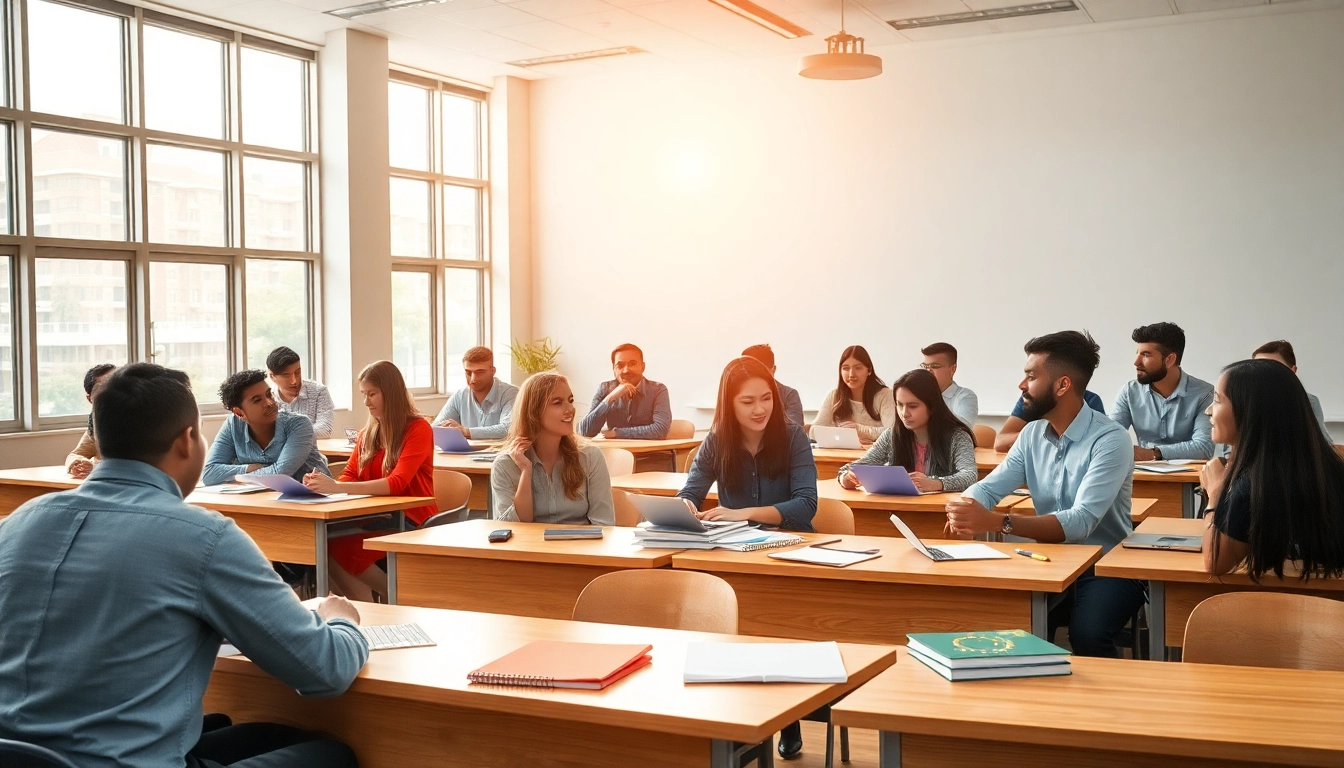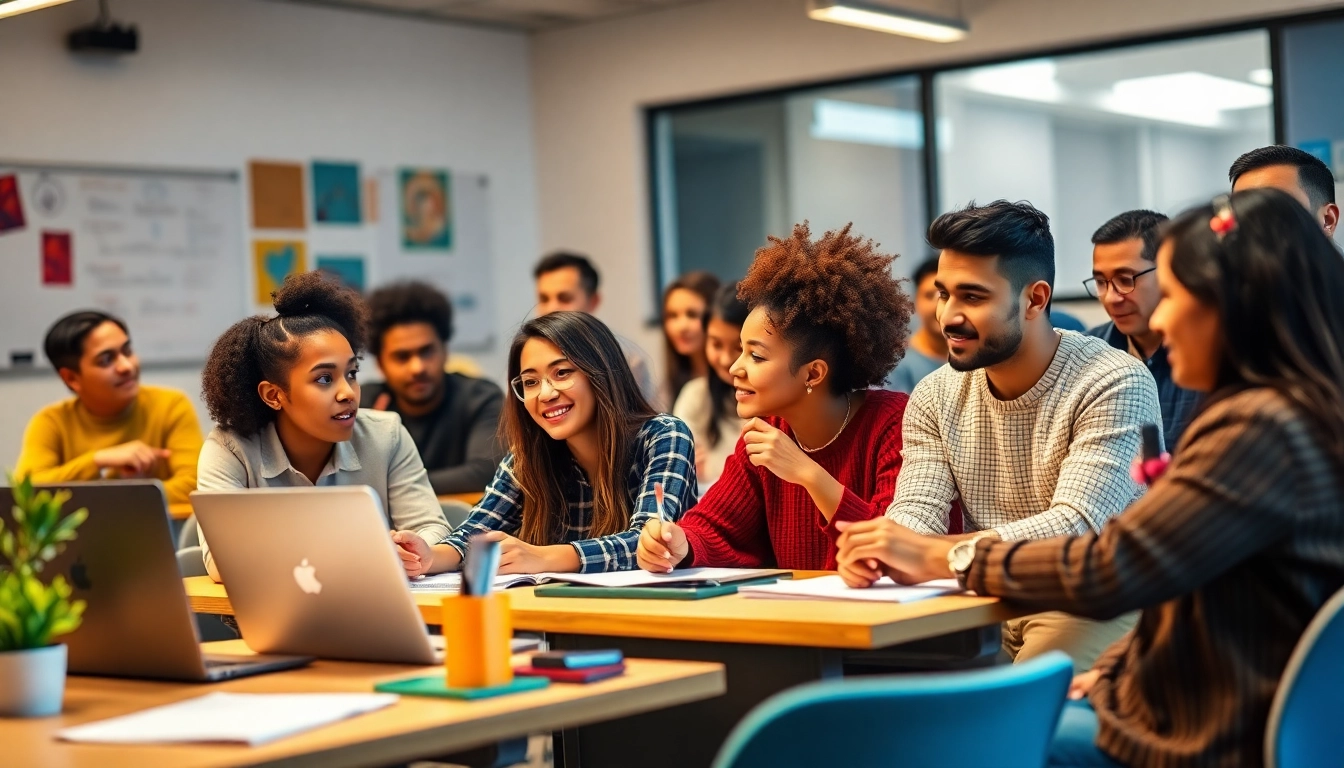Understanding the Foundations of Education
Defining Education and Its Impact on Society
Education is a systematic process through which individuals acquire knowledge, skills, values, and attitudes to navigate and contribute to society effectively. It encompasses formal learning in institutions, non-formal education methods, and informal learning experiences. The impacts of education on society are profound, influencing economic development, social cohesion, and individual prospects. By fostering critical thinking, creativity, and collaboration, education not only empowers individuals but also propels societies forward. As we explore the various aspects of education, we can appreciate its pivotal role in shaping a better world. For insights into how Education shapes individual potential and societal advancement, see more at Education.
Types of Educational Approaches and Methodologies
Various educational approaches exist, each with its unique methodology tailored to different learning needs and environments. Traditional instructional methods often emphasize rote learning and standardized testing. However, contemporary educational paradigms advocate for more holistic approaches. These include:
- Montessori Method: Focused on self-directed activity, hands-on learning, and collaborative play.
- Project-Based Learning (PBL): Engages students by having them work on projects that require critical thinking and problem-solving.
- Constructivism: Encourages students to build their understanding through experiences and reflection.
- Flipped Classroom: Students learn new content at home and engage in hands-on activities during class time.
Understanding these educational methodologies can help educators choose the right approach based on the context and student needs, fostering more effective teaching and improved learning outcomes.
Challenges and Opportunities in Contemporary Education
The contemporary education landscape faces numerous challenges, including disparities in access to education, varying quality of teaching, and the need for curriculum relevance in a rapidly changing world. Educational institutions are grappling with:
- Addressing Equity: Ensuring that every child has access to quality education, regardless of socio-economic background.
- Integrating Technology: Balancing the use of digital tools while maintaining traditional teaching methods.
- Workforce Readiness: Preparing students for the skills and competencies needed in today’s job market.
Despite these challenges, there are significant opportunities to innovate and improve educational practices. Initiatives focused on personalized learning, increased parental involvement, and the integration of social-emotional learning are some of the promising trends reshaping education today.
Key Principles of Effective Education
Engagement Techniques to Boost Student Participation
Student engagement is fundamental to successful learning. Educators must adopt innovative techniques to enhance participation actively. Some effective strategies include:
- Interactive Learning: Using group discussions, role-play, and peer teaching to foster involvement.
- Gamification: Incorporating game-like elements to make learning fun and motivating.
- Inquiry-Based Learning: Encouraging students to ask questions and seek answers through research and experimentation.
Successfully engaging students leads to better retention of information and a love for learning, which are crucial for lifelong educational journeys.
Importance of Critical Thinking in Education
Critical thinking skills are essential in navigating the complexities of modern life and the workforce. Education systems must prioritize teaching students how to analyze, evaluate, and synthesize information rather than just memorizing facts. Techniques to foster critical thinking include:
- Open-ended Questions: Promoting discussions that require students to think deeply and express their reasoning.
- Debates: Encouraging students to articulate and defend diverse perspectives on complex issues.
- Real-world Problem Solving: Engaging students with scenarios that reflect challenges they may face outside the classroom.
By enhancing critical thinking, educators can prepare students to become informed and responsible citizens capable of making decisions that benefit themselves and their communities.
Building a Supportive Learning Environment
A supportive learning environment is crucial for fostering student success. Elements of a supportive environment include:
- Safe Spaces: Creating a classroom atmosphere where students feel safe to express themselves.
- Establishing Relationships: Building strong connections between teachers and students to enhance trust and communication.
- Social-Emotional Support: Addressing students’ emotional and psychological needs to enhance their ability to learn.
By focusing on creating a nurturing community, educators can significantly enhance student engagement and achievement levels.
Adopting Technology in Education
Integrating Digital Tools for Enhanced Learning
The infusion of technology into education has transformed how we teach and learn. Digital tools such as learning management systems, educational apps, and interactive whiteboards enhance the learning experience by making it more engaging and personalized. A few key initiatives for effective technology integration include:
- Blended Learning: Combining traditional face-to-face instruction with online activities to cater to varied learning styles.
- Adaptive Learning Technologies: Utilizing platforms that adjust content and assessments based on individual student performance.
- Online Assessments: Implementing digital quizzes and assessments to gain insights into student understanding swiftly.
By employing these digital strategies, educators can create a more versatile learning environment that encourages participation and exploration.
Exploring Online Learning Communities
Online learning communities have emerged as a vital aspect of modern education, facilitating collaboration and knowledge sharing among learners and educators. Such communities provide numerous benefits, including:
- Peer Collaboration: Enabling students to work together, share ideas, and provide support beyond geographical constraints.
- Access to Resources: Providing access to vast databases of information, educational resources, and expert guidance.
- Flexible Learning Paths: Allowing learners to engage in education at their own pace and convenience, accommodating different schedules and commitments.
By fostering active participation in these communities, educational institutions can equip students with essential skills for the globalized workforce.
Balancing Technology with Traditional Education Methods
While technology offers numerous advantages, a successful educational framework requires balancing digital tools with traditional methods. Essential steps for achieving this balance include:
- Curriculum Alignment: Ensuring that technology-enhanced content aligns with educational goals and teaching standards.
- Professional Development: Providing training for educators to effectively integrate technology into their teaching practices.
- Feedback Mechanisms: Continuously assessing the effectiveness of both digital and traditional methods to refine learning experiences.
Creating an integrated approach not only maximizes the potential of each teaching method but also caters to diverse learning needs in the classroom.
Evaluating Educational Outcomes
Methods for Assessing Learning Progress
Continuous assessment of learning progress is essential to ensure that educational objectives are met. Educators can employ various assessment methods to gauge student understanding:
- Formative Assessments: Regular check-ins such as quizzes, assignments, and discussions to gauge ongoing student comprehension.
- Summative Assessments: Evaluating student learning at the end of an instructional unit to measure overall achievement.
- Self-assessments: Encouraging students to reflect on their learning, promoting accountability and deeper understanding.
Incorporating diverse assessment methods allows educators to capture a comprehensive picture of student learning and adapt instruction accordingly.
Feedback Mechanisms to Improve Education Quality
Feedback is a critical component of the educational process. Effective feedback enables students to identify areas for improvement and build on their strengths. Key strategies for delivering constructive feedback include:
- Timeliness: Providing feedback promptly after assessments while the content is still fresh in students’ minds.
- Specificity: Offering clear, actionable recommendations rather than vague statements to guide improvement.
- Encouragement: Balancing constructive criticism with positive reinforcement to motivate students.
Quality feedback not only enhances learner outcomes but also fosters a growth mindset, encouraging students to take ownership of their learning journey.
Measuring Long-term Educational Impact
Evaluating the long-term impact of education on individuals and society requires comprehensive metrics beyond traditional assessments. Considerations include:
- Employment Outcomes: Tracking graduates’ job placements, income levels, and career advancements as indicators of educational effectiveness.
- Life Skills Development: Assessing improvements in critical thinking, communication, and social skills that contribute to personal success.
- Community Engagement: Measuring students’ involvement in civic activities and community service as a reflection of education’s societal benefits.
Employing these broader metrics not only highlights educational effectiveness but also informs future policy and practice improvements.
Future Trends in Education
The Role of Lifelong Learning in Personal Development
Lifelong learning has become a vital component of personal and professional growth in an ever-evolving world. This paradigm shift emphasizes the importance of continuous education beyond formal schooling. Key elements of lifelong learning include:
- Curiosity and Exploration: Encouraging individuals to pursue interests, hobbies, and new skills throughout their lives.
- Access to Learning Resources: Utilizing online courses, workshops, and seminars to foster ongoing skill development.
- Networking Opportunities: Engaging with communities and peers to share knowledge and experiences.
In embracing lifelong learning, individuals position themselves as adaptable and responsive to changing job markets and evolving societal needs.
Innovations Shaping the Future of Education
As the educational landscape evolves, innovations continue to emerge, creating exciting opportunities for enhancing learning experiences. Noteworthy innovations include:
- Artificial Intelligence: Automating administrative tasks, providing personalized learning experiences, and offering tailored feedback.
- Virtual Reality (VR) and Augmented Reality (AR): Enabling immersive learning experiences that make complex subjects more accessible and engaging.
- Micro-learning: Delivering content in bite-sized segments to suit busy lifestyles and improve retention.
These innovations not only enrich the educational experience but also prepare students for a rapidly changing world.
Preparing for Changes in Educational Demands
As societal needs evolve, education must adapt to meet new challenges. Educators, policymakers, and institutions should prepare for these changes by:
- Emphasizing Soft Skills: Prioritizing communication, teamwork, and emotional intelligence to meet workforce demands.
- Encouraging Diversity and Inclusion: Embracing diverse perspectives and cultural competencies in curricula to prepare students for global citizenship.
- Valuing Vocational Education: Recognizing the importance of vocational training and apprenticeships in addressing employment needs.
By proactively embracing change, education can remain relevant in preparing future generations for success in their personal and professional lives.



